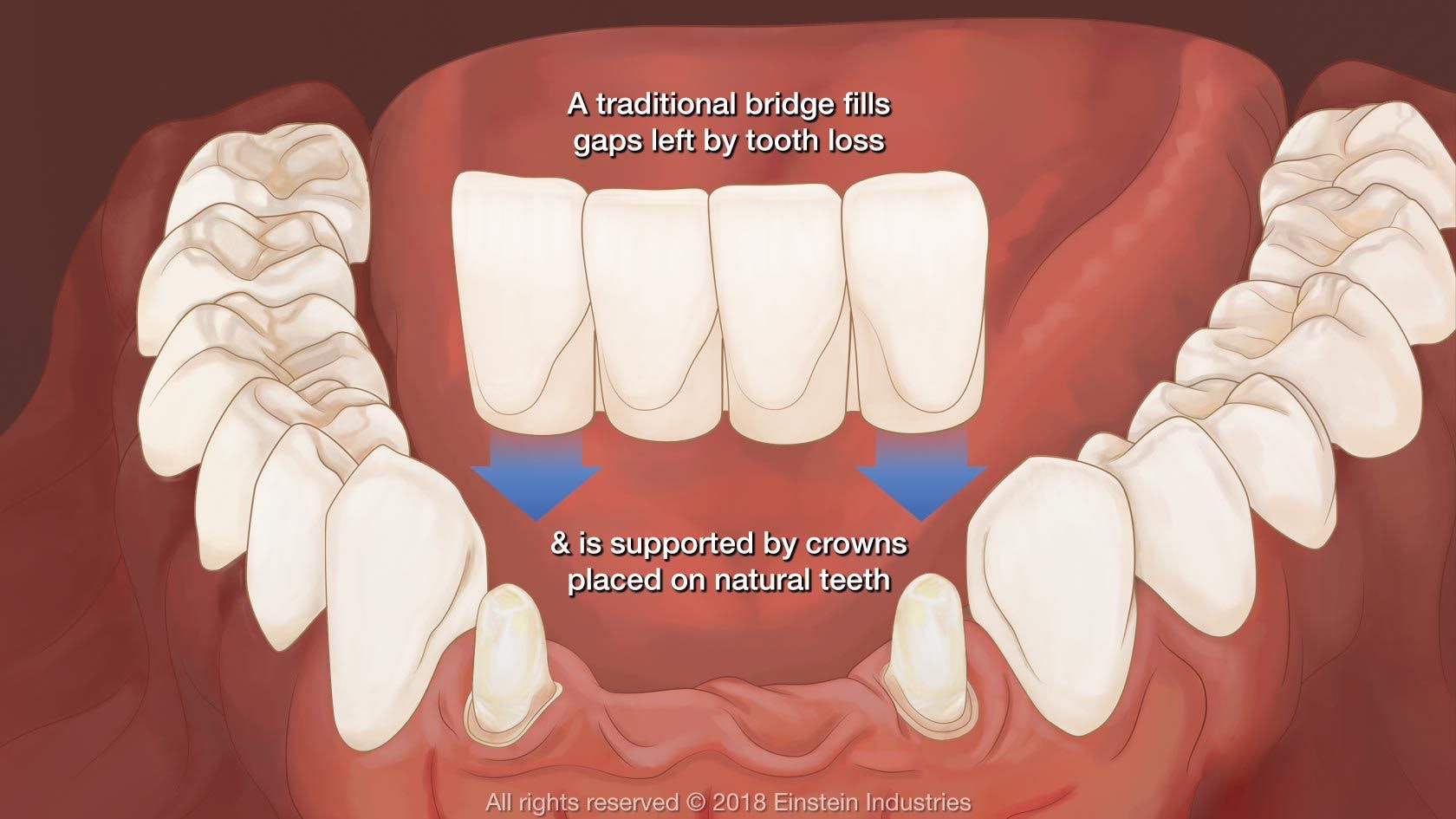
Key facts
- A dental bridge is used to replace one or more missing teeth.
- A dental bridge is fixed to your natural teeth and is not removable.
- If you look after it well, a dental bridge can last for many years.
What is a dental bridge?
A dental bridge can replace missing teeth with false teeth. The bridge is attached to your teeth on either side of the gap. Unlike dentures, a dental bridge is not removable. It’s fixed in place by your dentist or dental practitioner during the dental bridge procedure.
Bridges are usually made of porcelain and metals such as zirconia and gold alloy. Bridges made with resin and metal, and implant-supported bridges are also available.
When might I need a dental bridge?
You might need a dental bridge if you have one or more missing teeth. To have a dental bridge you will need to have healthy teeth on either side of the gap in your teeth.
What happens during a dental bridge procedure?
The usual procedure involves placing a crown on the teeth on each side of the gap. These crowns are joined together by another crown that acts as a false tooth.
You will need more than one appointment to get a dental bridge.
Your dentist or dental practitioner will examine your mouth and treat any tooth decay or gum disease. You may need to have an x-ray.
Your teeth and mouth will then be measured and checked to ensure the teeth that will support your dental bridge are strong enough.
Two healthy teeth will usually be filed down on either side of the gap to prepare the dental bridge. They will take a mould to make the bridge. You might be given a temporary bridge while waiting for your permanent bridge to be made.
When your permanent bridge is ready, you will have a second appointment to put it in place. Dental cement is used to fix the bridge to the prepared teeth.
Your dentist or dental practitioner might consider anchoring the bridge with a dental implant. Implants are surgically attached to your jawbone. Your practitioner will check if dental implants are suitable for you.
Resin and metal bridges can be used to replace your front teeth. A false tooth is attached to a small metal frame. The frame is fixed to the back of your teeth on either side of your gap.

How should I care for a dental bridge?
You’ll need to brush your bridge with fluoride toothpaste the same as you do for natural teeth. As the crowns that make a bridge are joined together, floss cannot be passed between the teeth. Ask your dentist or dental practitioner how best to clean beneath your dental bridge.
Regular visits to your dentist or dental practitioner are also important.
What are the benefits and risks of a dental bridge procedure?
The main benefit of a dental bridge is to maintain the function of your teeth.
If you feel self-conscious about missing teeth, a dental bridge can help give you more confidence when you smile.
Another advantage is that once the gap is filled, this will stop the other teeth leaning into the gap. If your teeth stay straight this helps with the bite.
Bridges can last for many years if they are cared for properly. However, they can fail, usually due to decay of the natural teeth next to them, or failure of the cement.
Talk to your dentist or dental practitioner about the costs of a dental bridge procedure.
What are the alternatives to dental bridges?
You could also ask your dentist or dental practitioner about:
- dentures — removable false teeth
- crowns — a cover to protect the teeth you have left
- a dental implant


